Micaella Pedros uses heat-shrunk plastic bottles to join furniture
Graduate shows 2016: Royal College of Art graduate Micaella Pedros has repurposed discarded plastic bottles into joints that can be used to hold wooden furniture together (+ movie).
The MA Design Products student scavenged containers from across London to use in her project, titled Joining Bottles. She used a heat-shrinking process to transform the plastic into malleable rings, which could then be placed around pieces of wood.
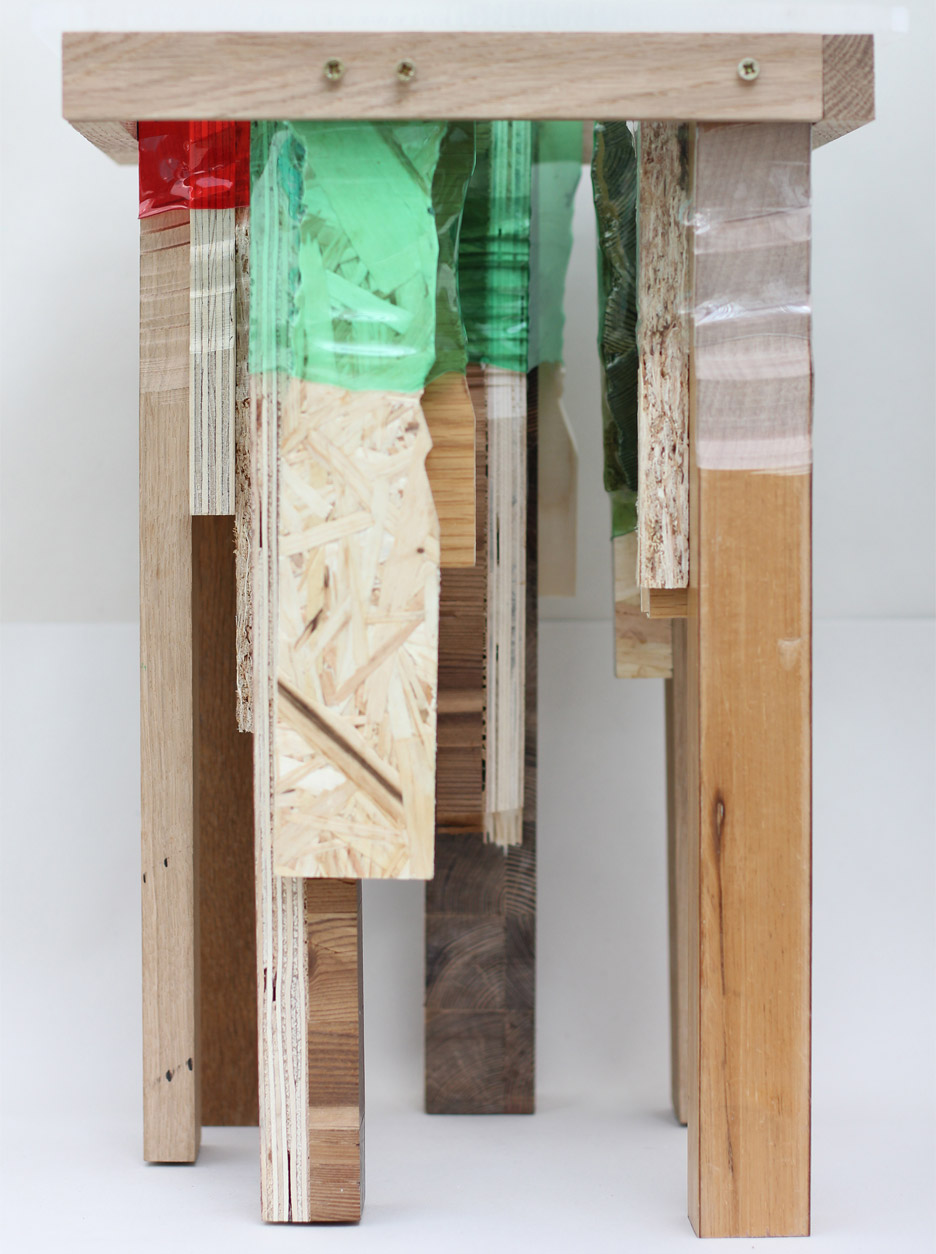
"Plastic bottles are everywhere around us, which makes it such an accessible and available material," Pedros told Dezeen.
"When I discovered its potential to form a join, I was amazed by the fact that anyone can do it, embracing its democratic value and contributing to the growing do-it-yourself culture."
The designer used a heat gun to warm the PET plastic, which shrinks at a temperature of 300 degrees Celsius as the molecules move closer together.
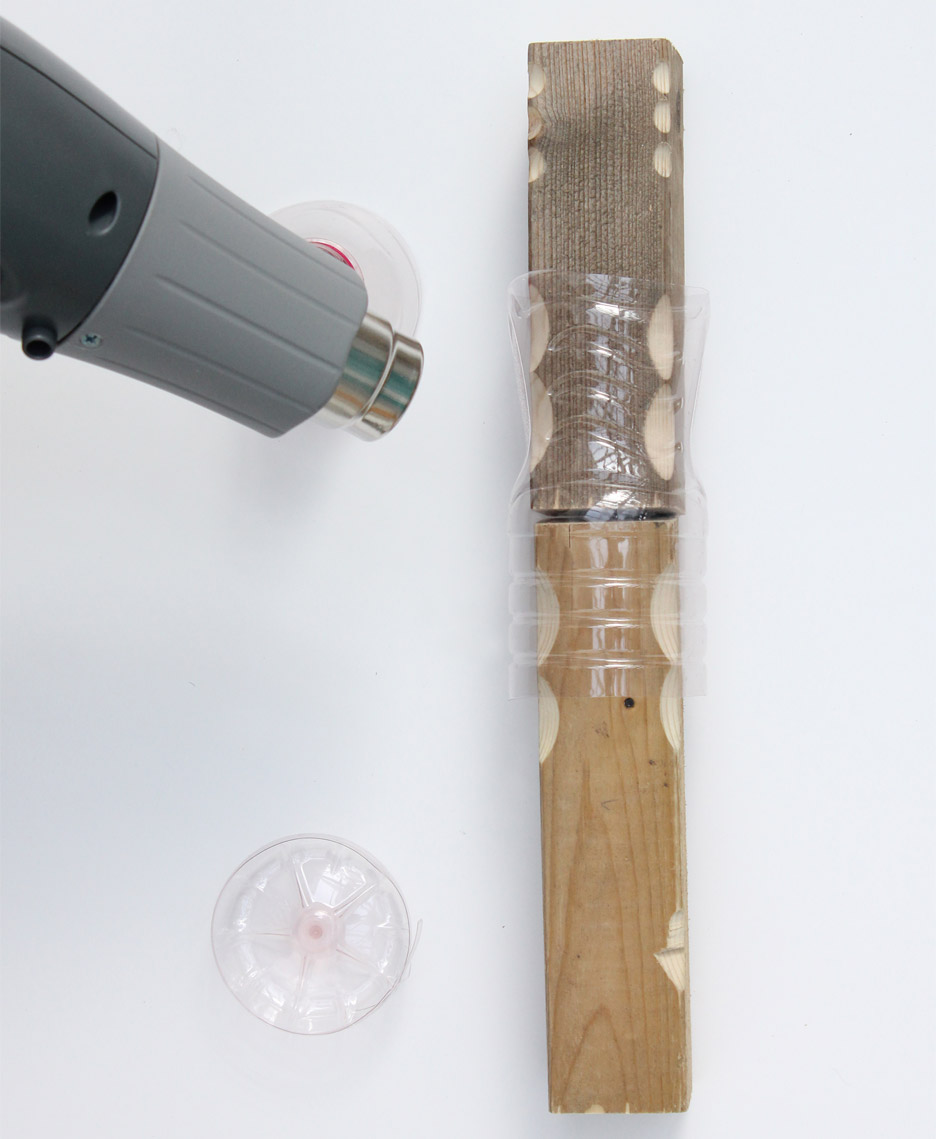
According to Pedros, the strength of the plastic joints depends on the shapes of the objects being linked and also on the grooves in the wood. Deeper ridges allow the plastic to form a stronger hold, and stop the separate parts from moving and weakening the joint.
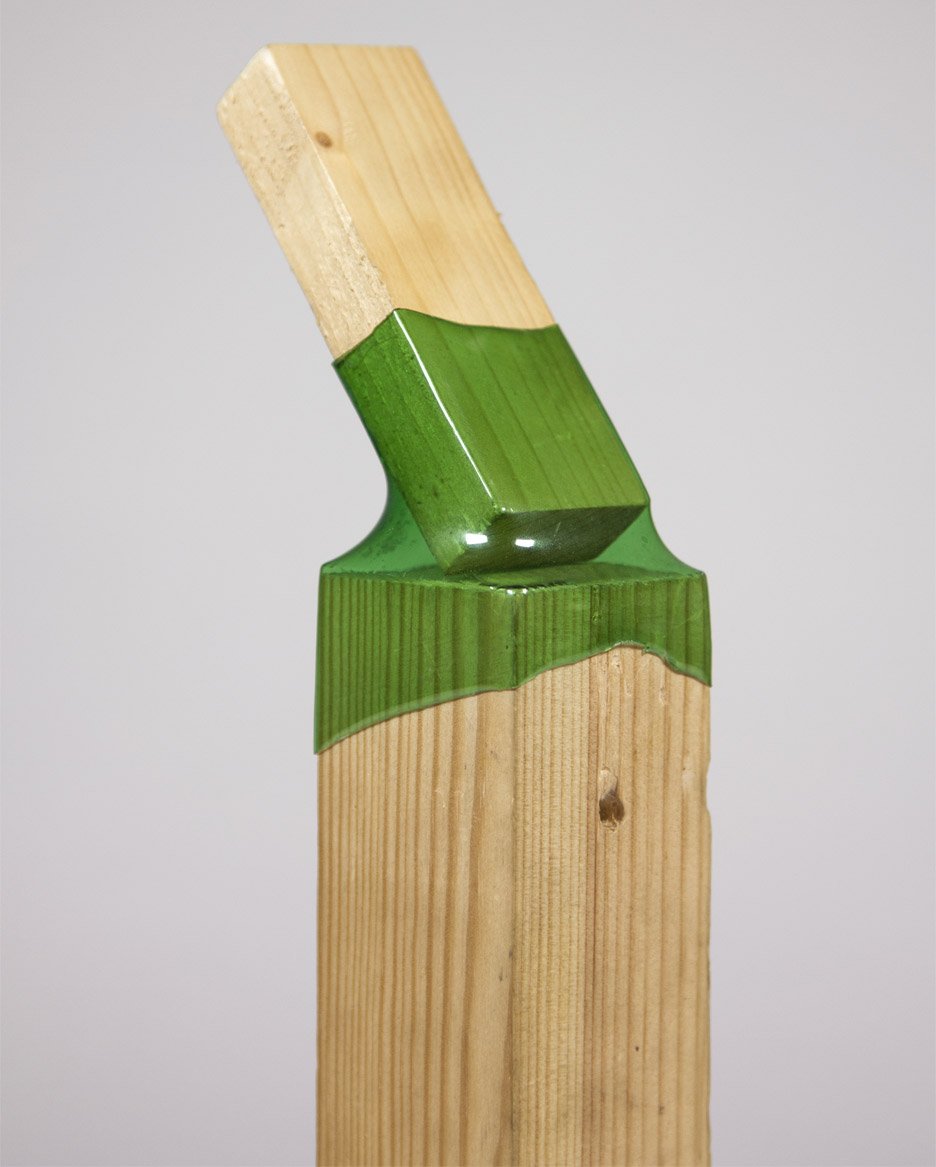
The process could be used to join offcuts of wood together, extend the length of pieces of timber, join processed and green wood, or even link wood and stones together. Pedros suggests it could also be used to fix broken furniture.
Pedros plans to further test the joining process in a laboratory and recently set up a workshop in east London to teach people how the process works.
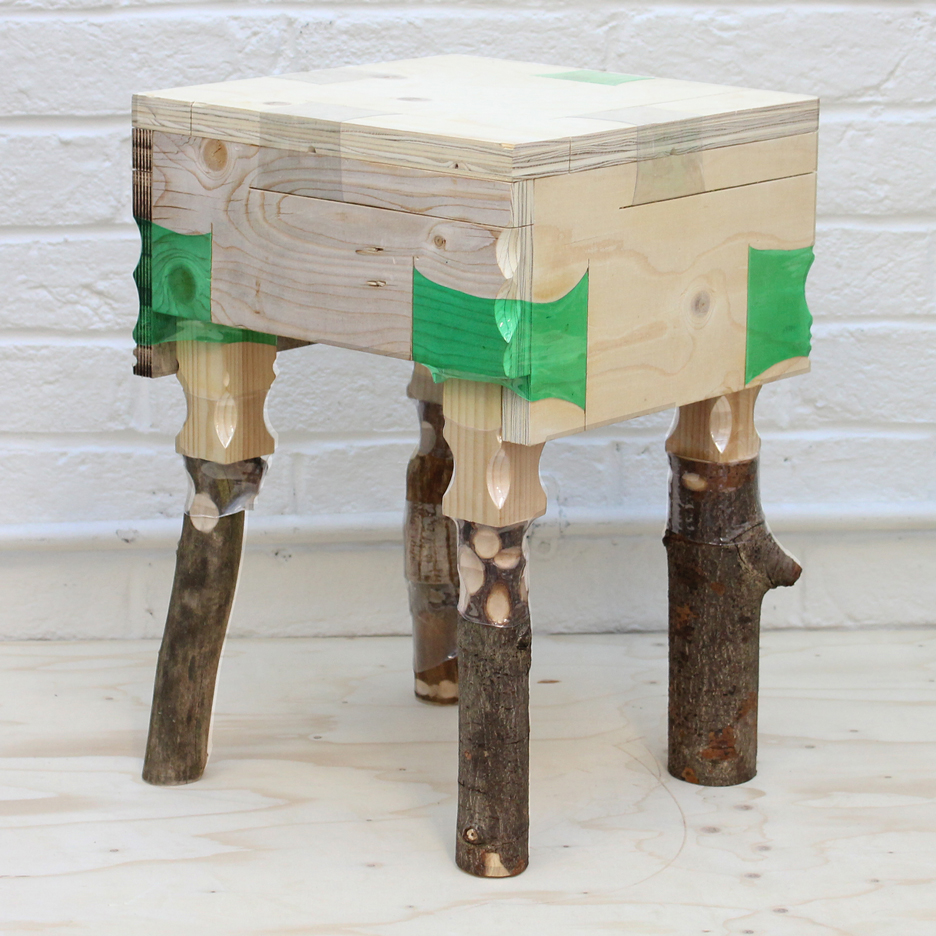
"There is something quite satisfying and magical about it," she said. "Everyone encounters plastic bottles, and learning about a new way to make use of it inspires people to try it out themselves."
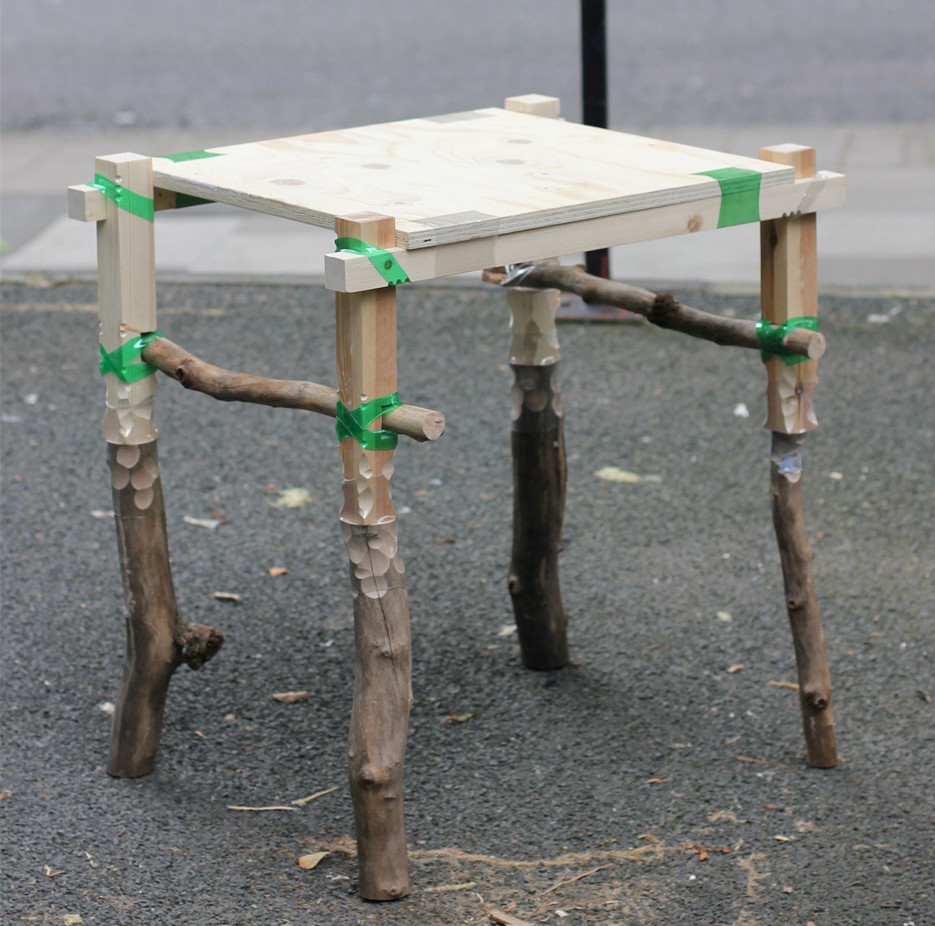
"It also shifts our perspective on waste and contributes to raising awareness by showing a new approachable and easy-to-make application," she added.
Fellow RCA graduate Tessa Silva-Dawson also explored plastics in her work, designing a natural version using cow's milk in place of polymers derived from fossil fuels.
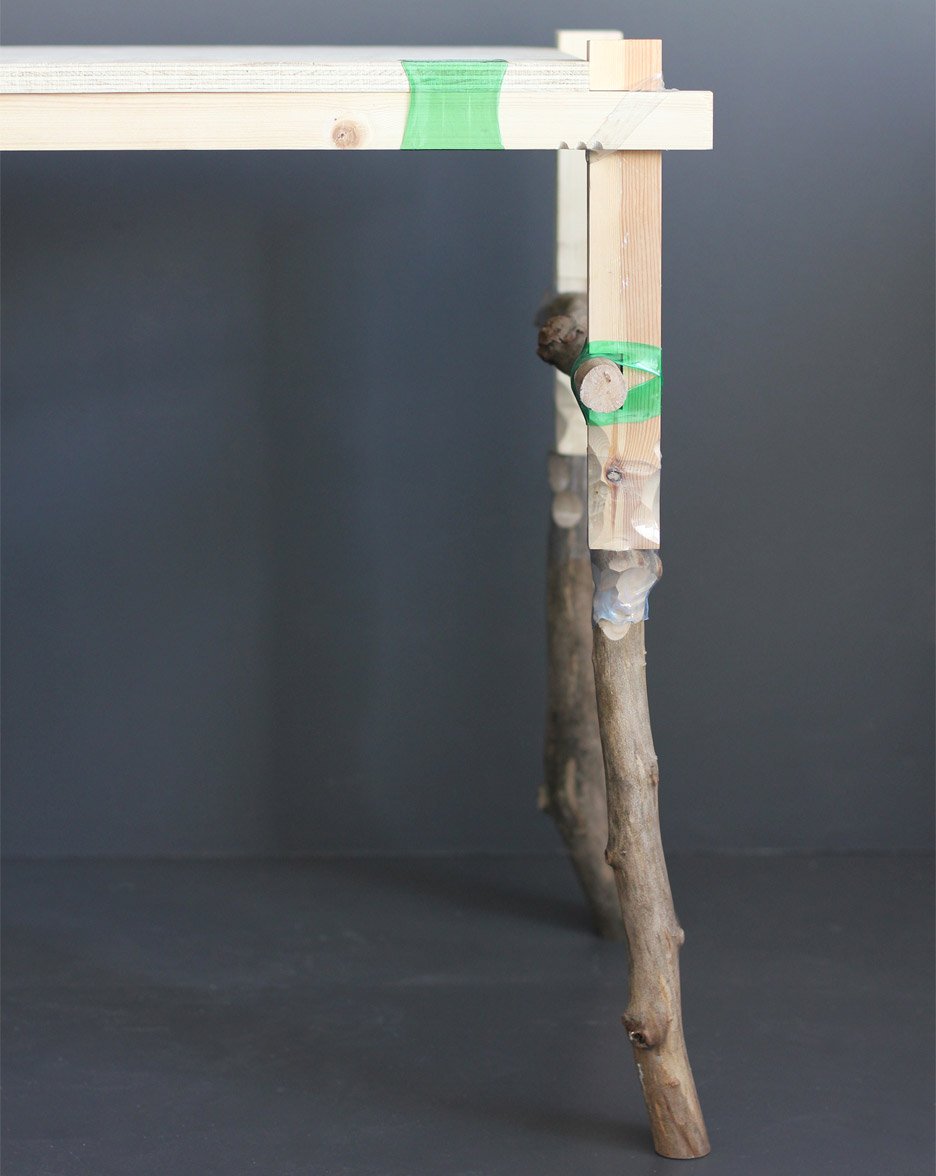
Both projects are on display at the ShowRCA graduate exhibition, which takes place from 26 June to 3 July 2016 at the Royal College of Art's Kensington campus. Dezeen is the media partner for the event, where a collection of wearable sex toys and a set of "cute" home appliances are also on display.